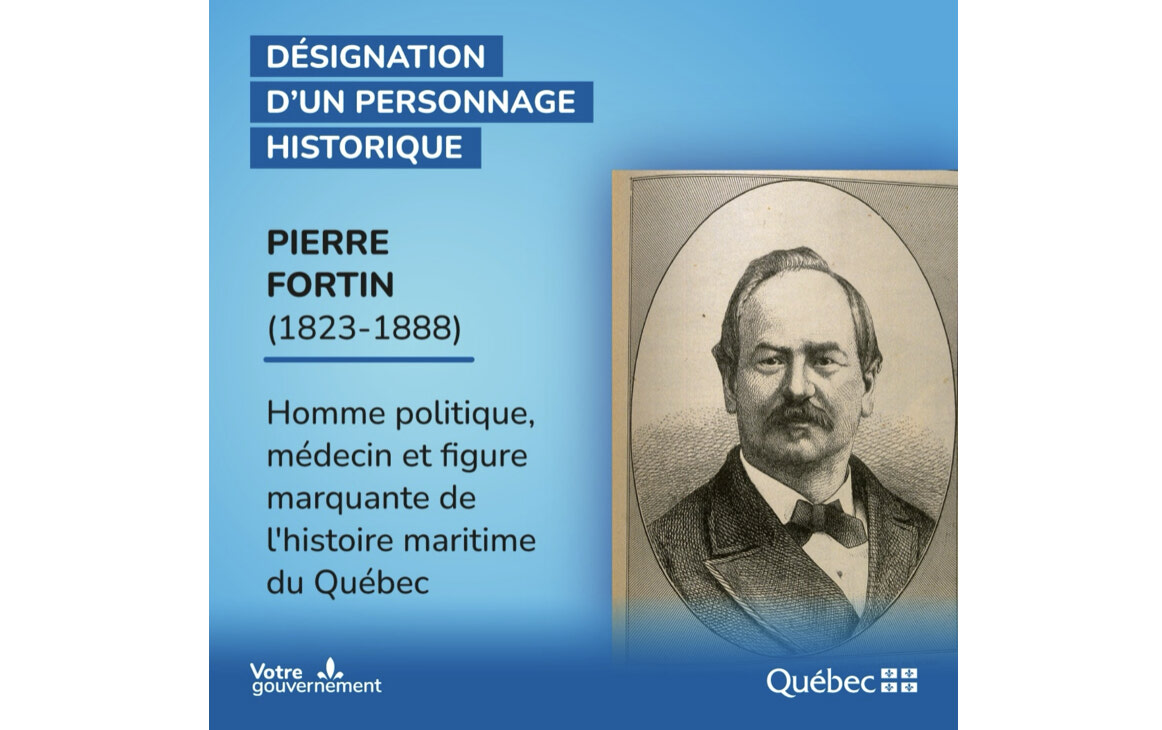Between the sea and politics: the legacy of a devoted man
Mélissa Gélinas
Member of the National Assembly for Gaspé Stéphane Lacroix, on behalf of the Minister of Culture and Communications and Minister responsible for the Outaouais region Mathieu Lacombe, announced at a press conference at the National Assembly of Quebec on November 4 the designation of Pierre Fortin as a historical figure, thus adding him to Quebec's cultural heritage.
His Story
One hundred and fifty years ago, on November 4, 1875, Pierre Fortin was sworn in as Speaker of the Legislative Assembly of Quebec, which later became the National Assembly of Quebec. According to Stéphane Lacroix, he was a politician who profoundly shaped 19th-century maritime Quebec. “For the people of the Gaspé Peninsula, he is not only a historical figure, but a powerful symbol of commitment, tenacity, and deep love for our region,” he said.
In 1823, Fortin was the first magistrate tasked with overseeing fishing activities and maintaining public order in the Gulf of St. Lawrence, travelling to isolated settlements aboard the first armed schooner (small wooden vessel), La Canadienne. “He was, in a way, Quebec’s first fisheries officer,” Lacroix explained.
Fortin was also a trained physician and never hesitated to provide free medical care to those in need, whether on land or at sea. “He was highly respected and appreciated by local fishermen and the communities along the St. Lawrence River,” Lacroix said. As such, he had a deep understanding of the challenges facing his community and the daily lives of people living in isolated villages. In 1867, he was elected the first Member of the Legislative Assembly of Quebec for the Gaspé riding.
A little later, in 1873, he served as a minister in the cabinet of Gédéon Ouimet, a lawyer, politician, and civil servant, before becoming Speaker of the Assembly from 1875 to 1876.
Fortin also sat for several years in the House of Commons in Ottawa as a Member of Parliament and Minister, where he advocated for the construction of lighthouses and contributed to the maintenance of navigation schools.
He also supported important projects for the development of the Gaspé Peninsula, including the Chaleur Bay Railway. “He understood that territorial sovereignty was not limited solely to the defence of borders,” Lacroix recounted. “It also encompassed the vitality of communities and the responsible development of resources.” As a result, thanks to his commitments, he left a legacy that continues to resonate today.
Fortin also participated in several significant historical events, notably by volunteering to care for Irish immigrants suffering from typhus during the epidemic that claimed more than 20,000 lives in Canada in 1847.
Exhibitions and Publications
Finally, to highlight this historical figure, an exhibition, Pierre Fortin: Mission Saint-Laurent, will be presented in a large hall at the Musée de la Gaspésie in 2026, at the Musée de la Côte-Nord in 2027, and will conclude at the Musée de la Mer des Îles de la Madeleine in 2028.
It should also be noted that the National Assembly of Quebec published a book on April 14, 2025, entitled: Le Golfe du Saint-Laurent au XIXe siècle : Le Québec maritime de Pierre Fortin. (The Gulf of Saint Lawrence in the 19th Century: Pierre Fortin’s Maritime Quebec). This book, priced at $42.95, is available in several bookstores in Quebec, including Archambault and Renaud-Bray.

